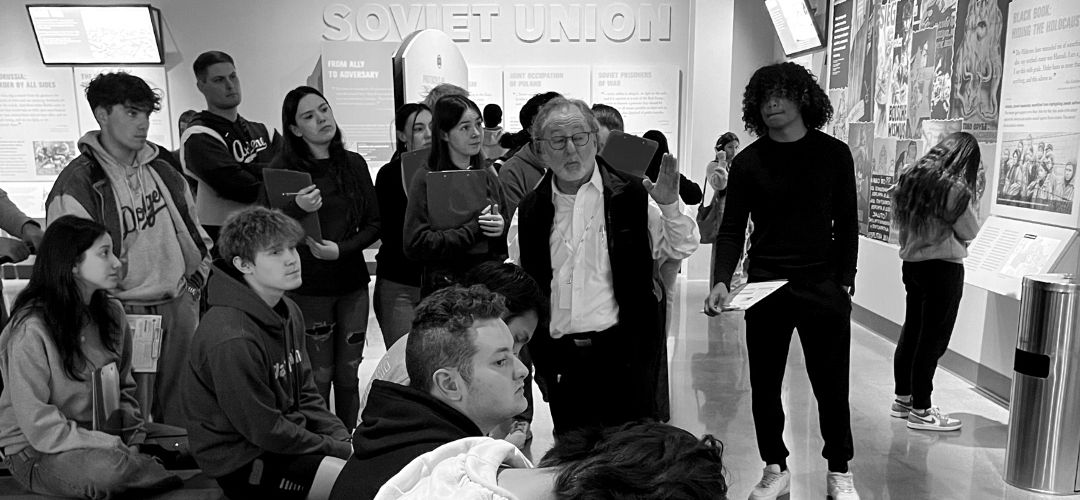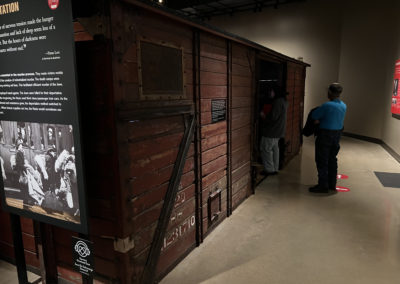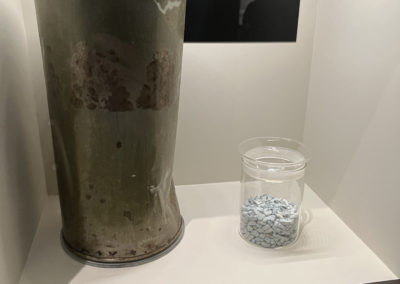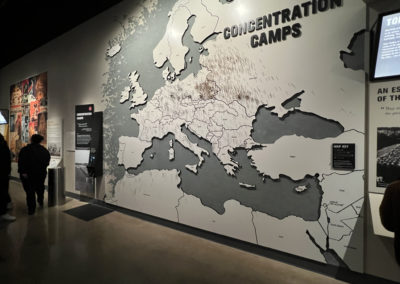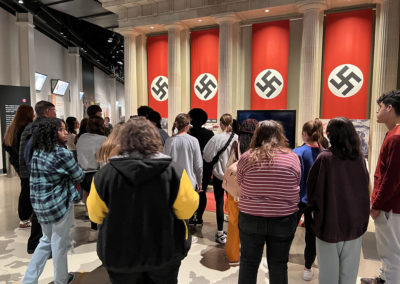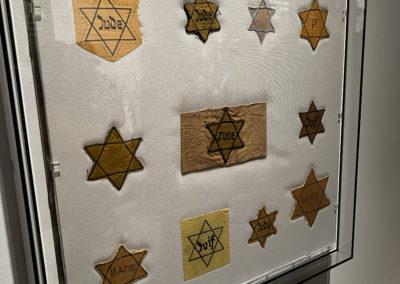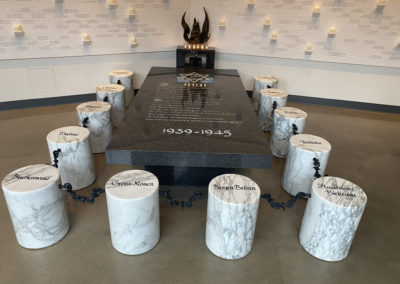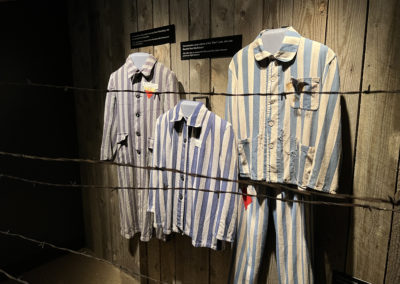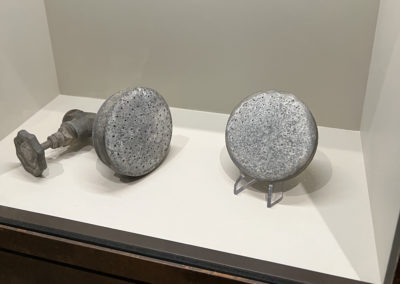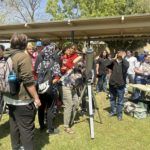DALLAS – Mel Wolovits has worked as a Docent at the Dallas Holocaust and Human Rights Museum since September 2019, and he’s seen thousands of people, both young and old, pass through the doors and hallways of the museum, which gives visitors an eyewitness experience to the Holocaust and other genocides.
About 60 students and teachers from the Abilene ISD toured the museum on March 20, as Abilene High School Social Studies teacher Jennifer Jordan and Cooper High School Social Studies teacher Josh Alcorn took students from their respective Holocaust and Genocide Studies classes to Dallas for the day. Also making the trip were AHS principal Emme Siburt and CHS Social Studies Department Chairperson Rylee Wilkerson.
This is the first year the class has been offered at either high school, and Jordan said the course had opened her students’ eyes to the stories of the Holocaust and other occurrences of genocide throughout history. She ordered a set of Dr. Gregory Stanton’s “The Ten Stages of Genocide” for her students to use and study the preventative measures needed to ensure those types of events never happen again.
“From there, we studied the history of Judaism,” Jordan said. “Then, we studied World War I and how it set the stage for World War II (Treaty of Versailles, Great Depression/Hyperinflation, establishment of the Weimar Republic). Finally, we studied Hitler’s life, rise to power, and actions during World War II.”
Jordan said she read as much about the Holocaust and other human rights abuses as she could because “I believe it’s so important not to forget the past.”
And that’s why Wolovits has been at the museum since he retired as an active attorney. Throughout those 3 1/2 years, Wolovits has endeavored to relay to museum-goers that “words of hatred can lead to persecution and death, and they have no place in our world.” That message is evident throughout the museum, which covers genocidal atrocities from the Nazis in World War II to Rwanda and human rights violations, whether they be related to race, gender, or sexual orientation.
Wolovits is a Docent – a person who acts as a guide, typically voluntarily, in a museum – in a section of the Holocaust wing dedicated to the Concentration Camps established by Nazis during World War II. As he talks to the students, he is in front of a map of Europe, the former Soviet Union, and Northern Africa that is covered by hundreds of pins to mark where concentration, slave, and death camps were set up. Wolovits recounts how many Jews were systematically exterminated during World War II (approximately 6 million), including his grandparents at Auschwitz where more than 3 million souls perished.
Incredibly, the number of pins on the map represents only six percent of the number of camps established by the Nazis and Russians during the war. The Russians, who went through a genocide of their own under the reign of dictator Joseph Stalin, had their camps inside the country where it’s estimated that Stalin had upwards of 20 million of his citizens put to death during his 30-year reign as the General Secretary of the Communist Party of the Soviet Union.
Students from AHS and CHS made their way through the museum in reverence, perhaps taken aback by what they saw, reading on different displays, and hearing from Wolovits and other Docents. Later, about 15-20 students were escorted into a refurbished cattle car, with little room to spare. They were told that the cattle once delivered more than 100 Jews at a time to concentration camps throughout Europe. They saw the Zyklon B pellets used to gas Jews in showers and luggage hanging from the ceiling that held the final belongings of Jews who were put to death.
“Some of my students broke into tears thinking about the conditions of being in the train car for days without no fresh air or bathroom facilities, etc.,” Jordan said, “and what the box car stood for in terms of the future of the people who were crammed inside.”
Finally, upon exiting the museum portion of the tour, they entered the Memorial and Reflection Room, allowing them to remember the victims and honor the relatives of Dallas families who perished in the Holocaust. Their names are engraved on a white marble wall, with a prominent black slab engraved with a prayer and surrounded by marble stones with the names of concentration camps etched into the top of each.
After going through the Memorial and Reflection Room, the students sat in an on-site theatre and watched a 45-minute movie with interviews of Dallas residents – some of whom have passed away – who were either survivors of the camps or had relatives who passed away in the camps. The theatre was silent as those men and women recalled the “Final Solution” tragedy and how it had permanently scarred them and their families.
“The thing that stuck out to me was how broad and fickle the world can be,” said AHS sophomore Kade Wester. “I didn’t understand the scale of how many genocides have occurred throughout history, but it’s something I’ll think about after the visit.”
The museum wasn’t just about the Holocaust, although that certainly dominates much of the material covered in the building. Information on other forms of hatred, human rights abuses, discrimination, and genocide is prevalent throughout the museum, including segregation, genocide in Cambodia and Rwanda, and the Civil Rights movement in the United States.
“My goal is for my students to be aware of the world around them and learn from past mistakes,” Jordan said. “I am so grateful for the opportunity to be allowed to teach this class and these students. They are remarkable and inspire me in some way every single day. They are awesome, and I have so much hope for the world’s future because they are in it and leaders.”
Those students and others like them also give hope to Wolovits, and they motivate him to keep going to tell his story.
“I think about my grandparents and my mother and other relatives every time I walk into the building,” he said. “But the desire to tell their story motivated me to become a teacher of the Holocaust. Every day I’m here, I bring my grandparents back to life, even briefly. And hopefully, those stories will inspire these young generations to be better and more tolerant and not give in to words and hatred.”

